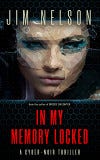Use three senses to make a scene come alive
The power of Flaubertian three-dimensionalism.
One bit of writing lore I’ve heard many times, and always attributed to Gustave Flaubert:
“Use three senses to make a scene come alive.”
I’ve written before on my skepticism of writing lore. Writing lore often follows a pattern: Some nugget of keen insight for writers to follow attributed to a big-name writer to burnish the saying with a little authority. Certainly this pattern is being followed with Flaubert’s “three senses” quote.
In this case, though, my skepticism is firmly tucked away. This is one bit of writing advice that’s well worth following (and not because Flaubert supposedly said it).
A fuller recounting of the history of this quote is on my blog, so I won’t go into it here. The short explanation is, the quote appears to have been popularized by Flannery O’Connor, who picked up the idea from friend and tutor Caroline Gordon. Unlike O’Connor, whose adoration shines bright decades after her death, history has not been kind to Gordon, and her work has largely been forgotten.
Which is too bad. Caroline Gordon had a keen eye for what works and what doesn’t in fiction. Her book How to Read a Novel brims with insight on what separates great writing from hum-drum prose. It’s in that book she describes what she calls “Flaubertian three-dimensionalism:” How Flaubert made the reader feel they’re experiencing the story, not merely reading it.
Scenes come alive
I first heard “Use three senses to make a scene come alive” over twenty years ago—attributed to Flaubert, naturally—during a writers conference at Foothill College. Those years have given me time to take advantage of this advice and to ponder why it works so well. Why three? Why not two, or four, or all five senses?
If a story limits itself to two senses, it will likely focus on sight (the most dominant of the human senses) and sound (because sound—dialogue—is our primary means of communication).
A novel of nothing but sight and sound may be compelling in subject matter, but readers will feel locked out of the book’s world. Scenes will play out as heads talking to each other. Objects will be nothing but photographs displayed from afar for the reader to observe. A very short story may be able to sustain this, but it takes a special kind of novel to keep this up and maintain the reader’s interest.
By employing three senses, the dream-vision of the story becomes less boxed-in and more nonlinear (Gordon’s “Flaubertian three-dimensionalism”). The other senses—taste, smell, and touch—have less communicative power, but are evocative to the reader. They’re not as cerebral and more bodily.
Naming a paper bag of popcorn identifies the object. Allowing the reader to smell the yeasty aroma, or taste the melted butter, or feel the heat of the kernels through the paper like small coals: These details inflate a flat object into a tangible thing. Imagine the possibilities of foiling expectations with sensory details: The popcorn smells of cigarettes, for example, or tastes soapy for some reason.
Here’s the opening of George Orwell’s Nineteen Eighty-Four:
It was a bright cold day in April, and the clocks were striking thirteen. Winston Smith, his chin muzzled into his breast in an effort to escape the vile wind, slipped quickly through the glass doors of Victory Mansions, though not quickly enough to prevent a swirl of gritty dust from entering along with him.
The sight of a bright day and swirling dirt, the feeling of a cold day (“vile wind”) and the grit of the dust, the sound of clocks striking thirteen. I “hear” the swirl of the dust too, although Orwell doesn’t have to describe it to make it real. There’s a lot going on in this concise paragraph.
This is why I think the three-senses rule works: It almost always forces the writer to break away from sight and sound, which dominate the story’s telling, and activate the other senses. The story evokes an experience rather than catalogs a series of events.

While I don’t think four or five senses in a scene is necessarily too much, doing so consistently will over-inflate the story with picayune details. I’ve tried four or five senses on occasion, only to cut them later as excess fat weighing down the scene. Three senses seems to be the sweet spot.
Keeping the number to three limits the writer to selecting only the most essential details, rather than flooding the reader with a surplus to create a sensory shotgun effect.
And, yes, there are exceptions to the above. Fiction writers who seek hard rules to follow militarily will soon discover disappointments. Familiarity with proven techniques, and knowing when to deviate from them, is what separates art from assembly-line manufacturing.
The purpose of sensory detail is to invite the reader into the story rather than have them observe it. Sensory details are not the story itself. They are subordinate to the characters, their motivations, and their decisions. Use three senses to make the characters’ world come alive, but only alive enough.
If you enjoy crime and mystery fiction, you should check out this big giveaway of free books from over 40 crime writers. Includes my latest crime thriller, Man in the Middle.


